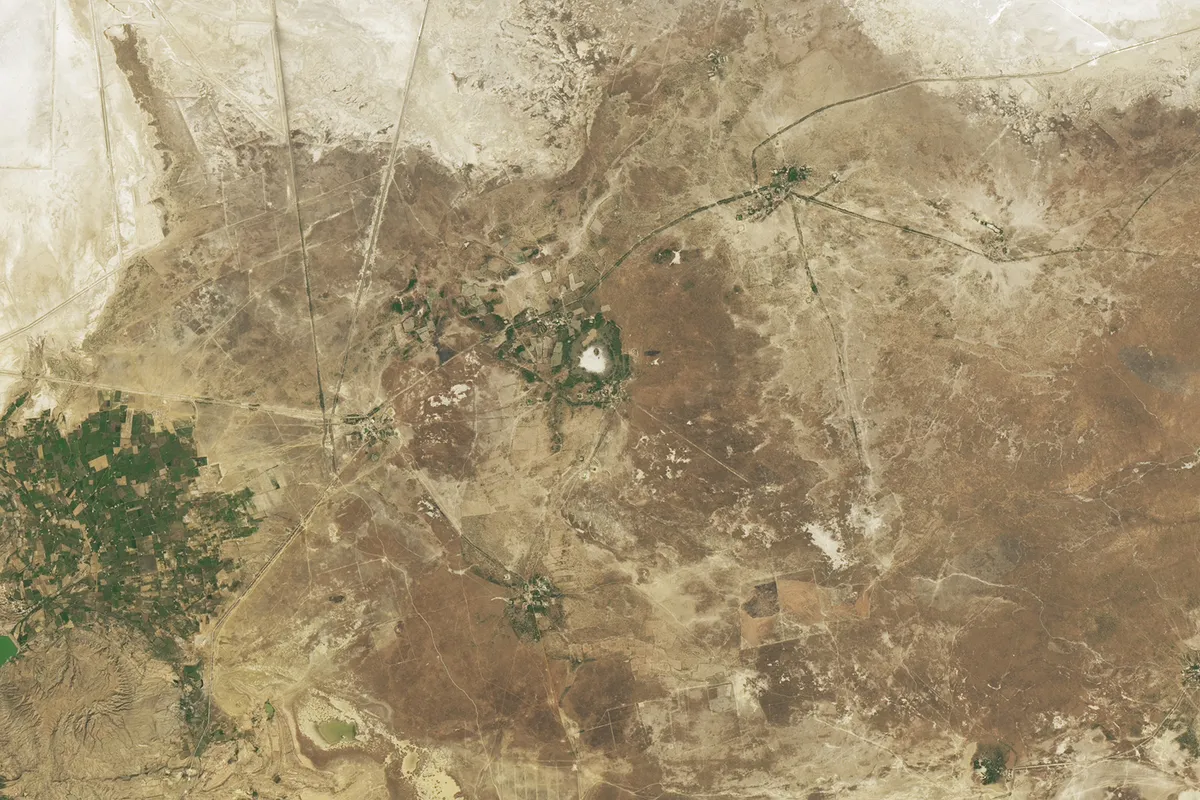NASA Earth Observatory's orbiting satellite has captured an image of a 1.8km-wide crater named Luna in India, which recent studies show could be the result of a meteorite hitting Earth thousands of years ago.
Luna, named because of its proximity to a village of the same name, is located in India’s Gujarat state in a grassland called the Banni Plains.
Scientists studying the structure had previously suspected it could be caused by a colossal space rock hurtling through space and striking Earth.
And a 2024 paper on the Luna crater states that chemical analysis shows it contains the characteristic signatures of a meteorite impact.
This image of Luna crater from space was captured by the Operational Land Imager instrument on the Landsat 8 satellite on 24 February 2024, as part of NASA's Earth Observatory programme.
Discover our pick of history's most famous meteorites

Analysing Luna crater
The Luna crater measures about 1.8 kilometres (1.1 miles) across, and its outer rim rises about 6 metres (20 feet) above the floor.
The low-lying area in which Luna is found is often submerged, and the crater often contains water.
A dry period in May 2022 enabled scientists to collect samples from the and carry out the studies resulting in further evidence that Luna is indeed a meteorite impact.
For example, the team behind the study discovered minerals that are not commonly found in natural settings on Earth.
These are rare minerals formed under extremely high pressures and temperatures, such as those generated when a meteorite strikes Earth.
They also found high concentrations of the element iridium, consistent with studies at other impact craters.
And radiocarbon dating of plant remnants at the site enabled the scientists to conclude that the Luna impact occurred about 6,900 years ago.
See more incredible images of Earth at earthobservatory.nasa.gov
